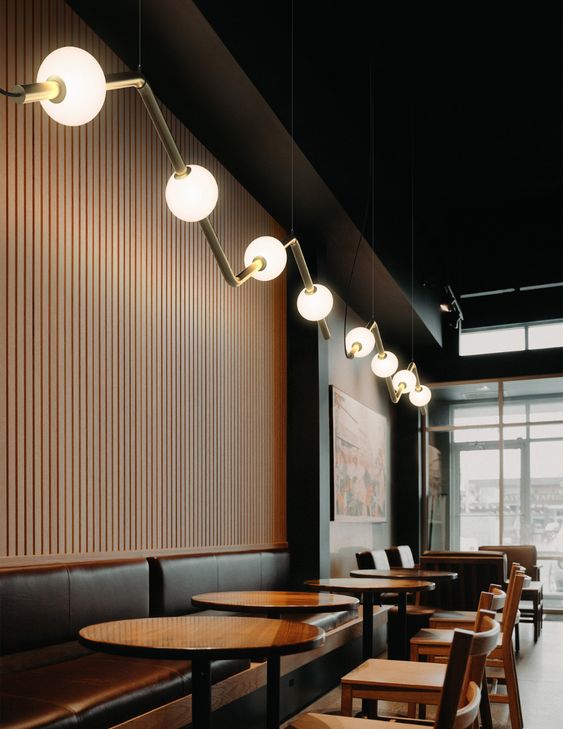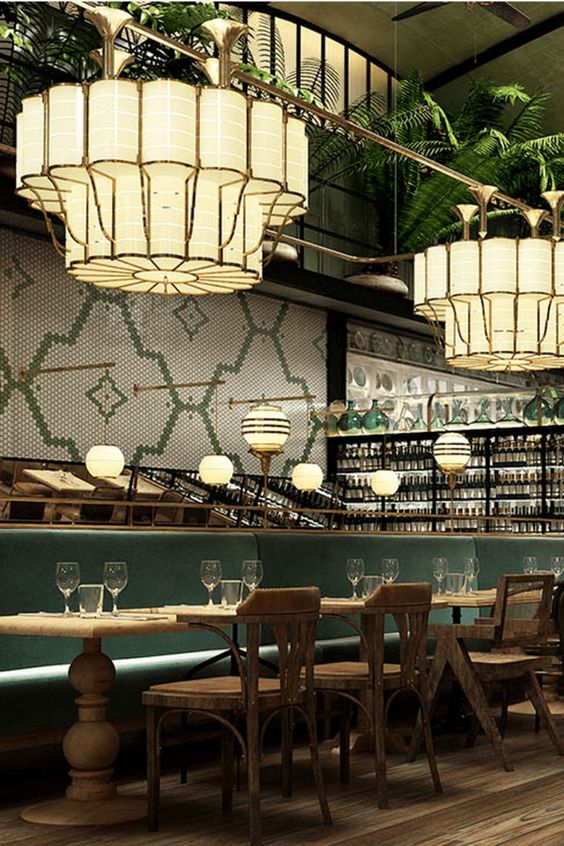In the realm of dining establishments, lighting serves as a crucial ingredient that goes beyond mere visibility; it sets the mood, enhances the dining experience, and contributes to the overall ambiance. From cozy cafés to elegant restaurants, the right lighting design can transform spaces, evoke emotions, and leave a lasting impression on patrons. This article explores the significance of lighting in restaurant and café interiors and delves into various types and techniques to illuminate these spaces effectively.
The Significance of Lighting in Dining Venues:
Lighting transcends its practical function to become an integral part of the dining experience, influencing patrons' perception of the food, service, and ambiance. Beyond illuminating the space, it sets the tone, fosters intimacy, and reinforces the establishment's identity. Thoughtful lighting can enhance the dining atmosphere, encourage social interaction, and even influence customer satisfaction. Conversely, poor lighting choices can detract from the overall experience, leaving patrons feeling disconnected or uninspired
Types of Lighting in Restaurants and Cafés:
Accent Lighting: Accent lighting adds drama and visual interest by highlighting architectural features, artwork, or focal points within the restaurant or café. It creates depth and dimension, drawing patrons' attention to specific elements and enhancing the overall ambiance. Track lighting, recessed lights, and adjustable spotlights can be used to accentuate dining areas, bar counters, or decorative displays, creating focal points that contribute to the restaurant's aesthetic appeal.

Ambient Lighting: Ambient lighting serves as the primary source of illumination in dining spaces, providing overall brightness and establishing the general mood. In restaurants and cafés, ambient lighting sets the tone for the dining experience, whether it's cozy and intimate or vibrant and lively. Soft, diffused lighting creates a warm and inviting ambiance, while brighter lighting fosters a more energetic atmosphere. Common sources of ambient lighting include ceiling-mounted fixtures, pendant lights, and wall sconces strategically placed throughout the space.

Decorative Lighting: Decorative lighting fixtures serve both functional and aesthetic purposes, adding personality and style to restaurant and café interiors. These fixtures not only provide illumination but also serve as design statements that reflect the establishment's theme and ambiance. Chandeliers, pendant lights, and statement fixtures can create a sense of elegance and sophistication in upscale restaurants, while quirky or eclectic lighting designs can add character to trendy cafés and bistros.

Task Lighting: Task lighting is focused illumination designed to facilitate specific activities such as reading menus, writing orders, or food preparation. In restaurant kitchens, bar areas, and serving stations, task lighting ensures adequate visibility and efficiency in performing tasks. Under-cabinet lights, adjustable spotlights, and pendant lights above work areas are commonly used for task lighting in dining establishments.

Strategies for Effective Lighting Design:
-
Layering: Layering different types of lighting creates depth and versatility in dining spaces, allowing for seamless adjustments to suit various dining occasions. By integrating ambient, task, accent, and decorative lighting elements, establishments can curate dynamic environments that cater to diverse patron needs.
-
Dimmers: Dimmer switches offer control over light intensity, enabling establishments to adapt the ambiance to different dining scenarios. Dimming lights during evening service fosters intimacy, while brighter lighting enhances daytime dining experiences.
-
Lighting Controls: Implementing lighting controls such as timers and sensors enhances operational efficiency and energy conservation. Automated systems adjust light levels based on occupancy, time of day, or natural light conditions, ensuring consistent illumination while minimizing energy consumption.
Lighting design plays a critical role in shaping the dining experience and ambiance of restaurants and cafés. By understanding the importance of lighting and employing effective techniques, establishments can create inviting, memorable, and visually captivating environments that resonate with patrons. Whether designing an upscale fine dining establishment, a cozy neighborhood café, or a trendy bistro, investing in thoughtful lighting design can elevate the overall dining experience and leave a lasting impression on customers.


